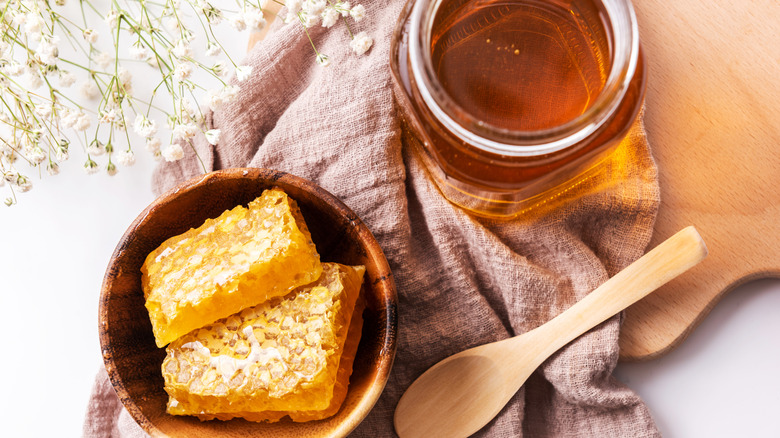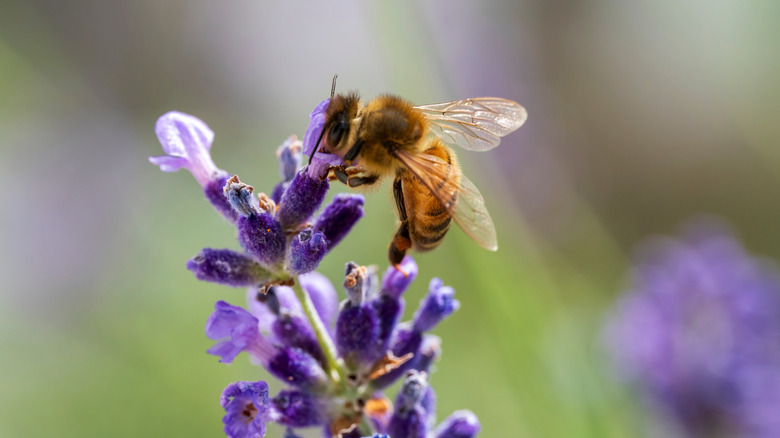This Is The Only State That Produces Purple Honey
Honey is a delicious treat that goes well with almost anything, from enhancing bland store-bought orange juice to a sweet ingredient in your steak's marinade. This sweet golden ambrosia is truly a wonder of the culinary world. And yet, in North Carolina, there's one spot where it's not so golden, and even more wondrous. In fact, the North Carolina Sandhills are home to purple honey, a rare phenomenon unique to the region.
To this day, the cause of the Old North State's purple honey is a complete mystery. It shows up randomly and inconsistently. There's no predicting it, and even in the same apiary, individual hives might have some while their neighbors only produce typical honey. Equally as mysterious is why it's unique to North Carolina, especially why it only appears to be one region of the state. The Sandhills' ecology is unique, with a fascinating variety of flora and fauna, but so far, none of it provides a definitive answer for the purple honey.
Reportedly, purple honey is even sweeter than typical honey, and it's even been said to carry faint fruity undertones. Aside from the color and slight difference in taste, purple honey is the same as regular honey, and does not spoil. Purple honey is for sale from various apiaries, but unsurprisingly given its rarity and inconsistency, it's much pricier than normal. It's also sold in smaller quantities, and it's impossible to predict when it's in stock.
What causes North Carolina's purple honey?
Theories abound as to the cause of North Carolina's famous purple honey. One common theory is the mineral content of the local soil. The Sandhills' soil is very alkaline and high in aluminum, which transfers to the plant nectar the bees consume. Theories go that the aluminum reacts to the bees' stomach acid to produce the violet hue, or that the high pH value changes the color like it does hydrangea flowers, though they're unconfirmed.
Another theory that seems to hold more water is the local flora. Some theorize that the distinctive color of the voracious kudzu vine is responsible, while others believe that drought conditions cause bees to seek out hardy plants like the purple-colored huckleberry, and that the color transfers to the honey. Still more believe that sourwood flowers are responsible, since they have turned purple overnight when soaked in bee digestive fluids.
The sporadic and unpredictable nature of North Carolina's purple honey means that it's likely caused by a variety of different factors that only line up every so often. It's entirely possible that we'll never know for certain what the secret truly is, but hopefully, it doesn't stop anytime soon, and we can keep enjoying purple honey for years to come.

